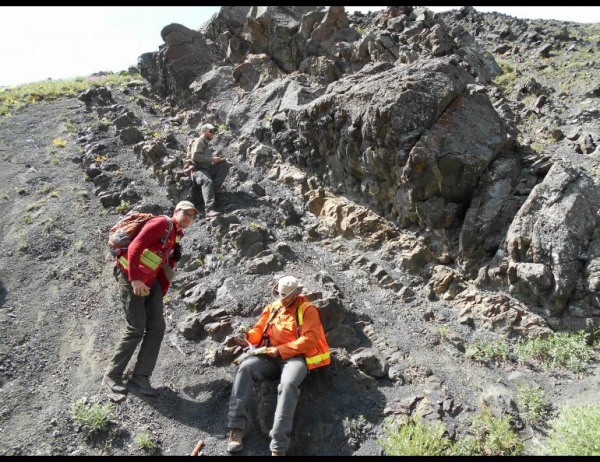Precipitation more than temperature influenced the distribution of herbivorous dinosaurs in what is now Alaska, according to new research published this month.
The finding, published April 2 in the journal Geosciences, discusses the distribution of hadrosaurids and ceratopsids — the megaherbivores of the Late Cretaceous Period, 100.5 million to 66 million years ago.
The work can help scientists project what the Arctic region might look like in the years ahead if the climate turns similarly warm and wet.
University of Alaska Fairbanks Geophysical Institute geology professor Paul McCarthy, who is also chair of the UAF Department of Geosciences, is co-author of the research paper written by Anthony Fiorillo of Southern Methodist University in Texas. McCarthy has been studying the region’s ancient past for many years.
Read more at University of Alaska Fairbanks
Image: Sedimentary rocks of the Cantwell Formation, representing a prehistoric floodplain environment, are shown in this June 2017 photograph. Dinosaur tracks are visible at the base of the thick, upper sandstone bed. (Credit: Photo by Paul McCarthy)


